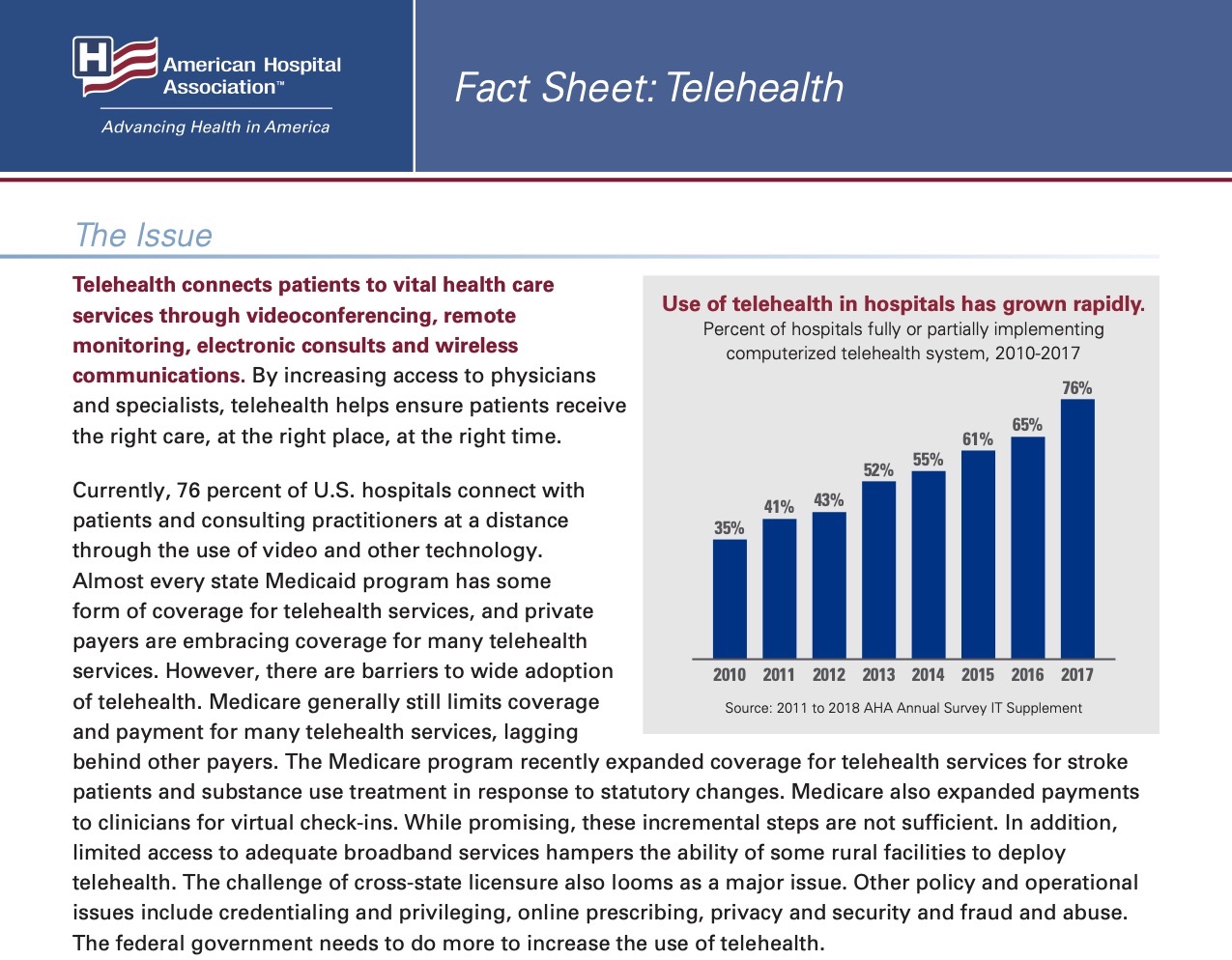Telehealth connects patients to vital health care services through videoconferencing, remote monitoring, electronic consults and wireless communications. By increasing access to physicians and specialists, telehealth helps ensure patients receive the right care, at the right place, at the right time.
Currently, 76 percent of U.S. hospitals connect with patients and consulting practitioners at a distance through the use of video and other technology. Almost every state Medicaid program has some form of coverage for telehealth services, and private payers are embracing coverage for many telehealth services. However, there are barriers to wide adoption of telehealth. Medicare generally still limits coverage and payment for many telehealth services, lagging behind other payers. The Medicare program recently expanded coverage for telehealth services for stroke patients and substance use treatment in response to statutory changes. Medicare also expanded payments to clinicians for virtual check-ins. While promising, these incremental steps are not sufficient. In addition, limited access to adequate broadband services hampers the ability of some rural facilities to deploy telehealth. The challenge of cross-state licensure also looms as a major issue. Other policy and operational issues include credentialing and privileging, online prescribing, privacy and security and fraud and abuse. The federal government needs to do more to increase the use of telehealth.
